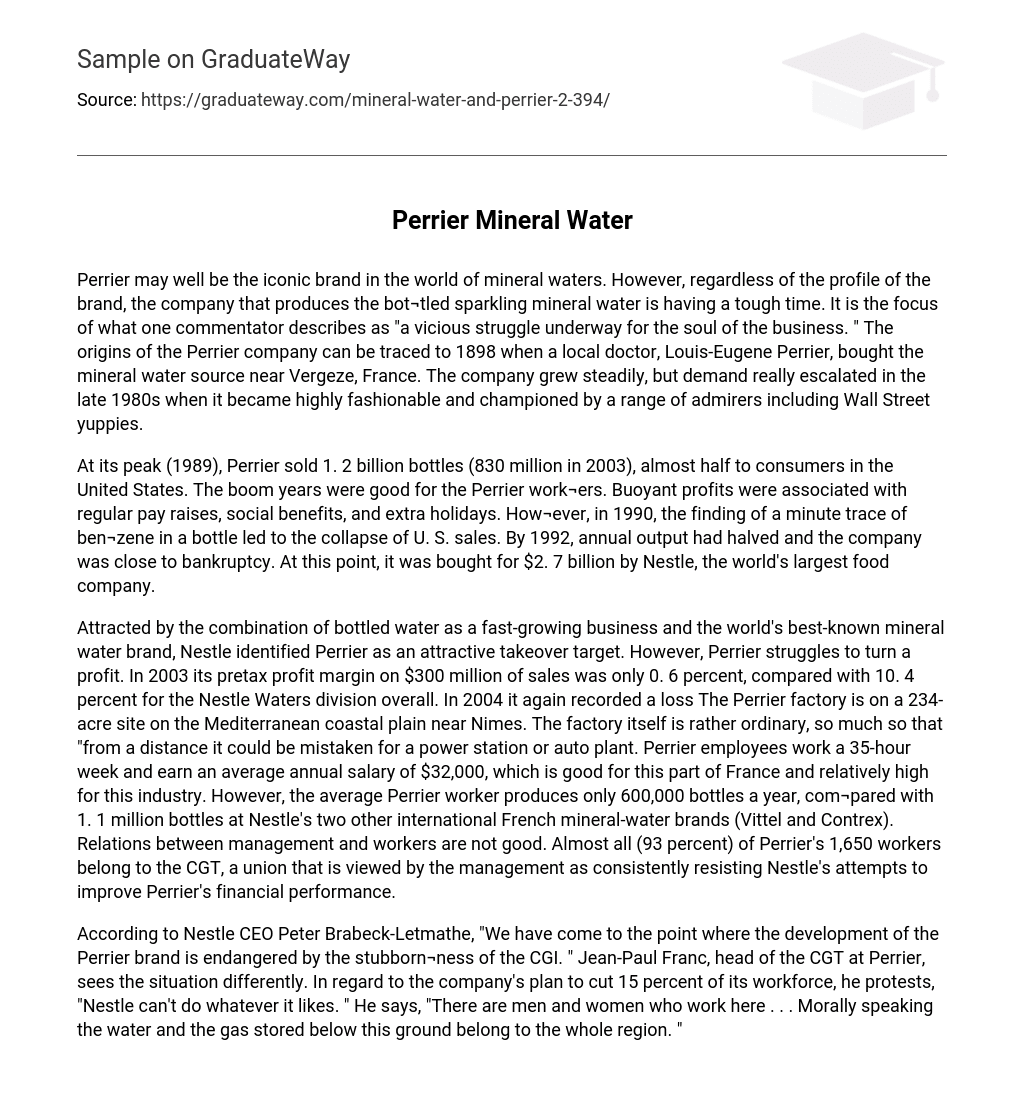Perrier, a well-known name in the mineral water sector, is currently dealing with major obstacles as its bottled sparkling mineral water manufacturer vies for control of the company.
In 1898, Louis-Eugene Perrier purchased a mineral water source in Vergeze, France, initiating the beginning of the Perrier company. The company grew and prospered until the late 1980s when it experienced a substantial rise in demand due to its immense popularity among Wall Street yuppies and other admirers.
In 1989, Perrier had a boost in sales, selling 1.2 billion bottles (830 million in 2003), with nearly half of those being sold to consumers in the United States. This period of success led to positive outcomes for Perrier employees who received regular salary increases, social benefits, and additional vacation days.
However, the U.S. market saw a significant decline in sales after detecting a small amount of benzene in one bottle in 1990. Consequently, by 1992, the company’s annual production decreased by half and faced imminent bankruptcy. Eventually, Nestle, the world’s largest food company, acquired Perrier for $2.7 billion.
Nestle saw the potential in Perrier, a famous mineral water brand, and considered it as an appealing acquisition due to the growing bottled water industry. However, Perrier has been facing difficulties in generating profits. In 2003, its pretax profit margin was only 0.6% on $300 million of sales, while the overall Nestle Waters division had a margin of 10.4%. In 2004, Perrier recorded another loss. The Perrier factory is located on a 234-acre site near Nimes on the Mediterranean coastal plain.
The factory is unremarkable in appearance, resembling a power station or auto plant from a distance. Perrier employees work 35 hours per week and earn an average annual salary of $32,000, which is considered good for the region and relatively high for the industry. However, each average Perrier worker only produces 600,000 bottles annually, compared to Nestle’s other French mineral-water brands (Vittel and Contrex), which produce 1.1 million bottles. The relationship between management and workers is strained, with 93 percent of Perrier’s 1,650 employees belonging to the CGT union. This union is seen by management as consistently resisting Nestle’s efforts to improve Perrier’s financial performance.
Nestle CEO Peter Brabeck-Letmathe expresses concern about the future of the Perrier brand due to the stubbornness of the CGI. On the other hand, Jean-Paul Franc, head of the CGT at Perrier, opposes Nestle’s plan to reduce the workforce by 15%. He emphasizes that Nestle does not have the freedom to do as it wishes and highlights the moral aspect of the water and gas resources below the region, which belong to the entire community.





